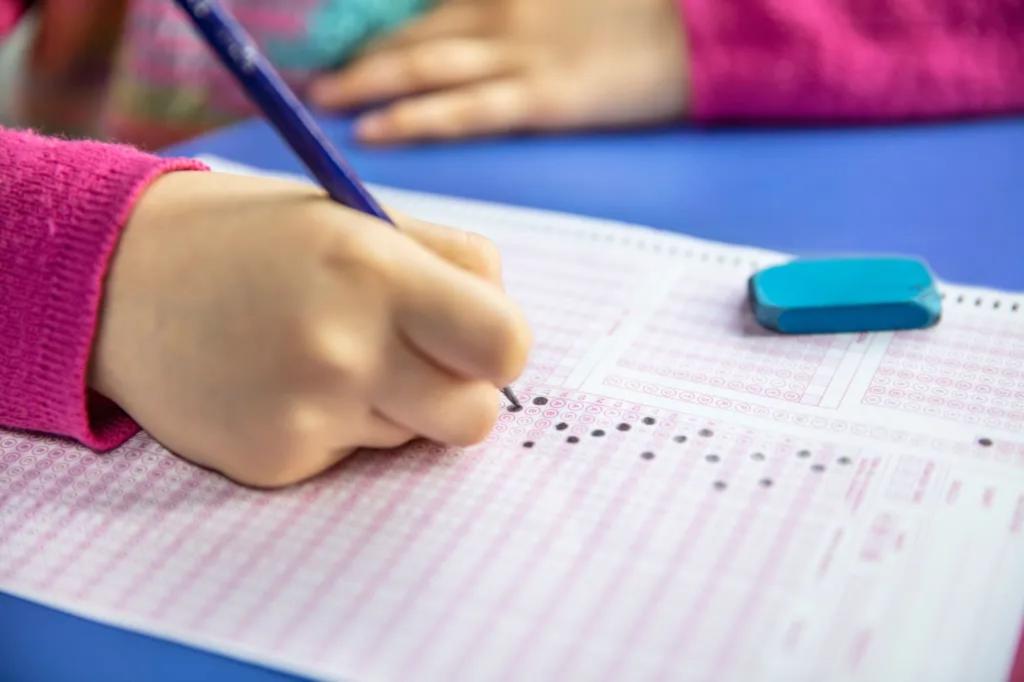More than 40% of grammar school students in the city failed the state’s standardized math and reading texts this year — but officials praised some gains in the results released Monday.
More city public school in grades 3-8 passed the proficiency tests this year for English Language Arts and math than they did last year though critics contended those are small victories as the Big Apple’s school spending tops $41 billion and the state’s $36,293 per pupil tab is the highest in the nation.
Some 56.3% of students met the proficiency standards for ELA, up 7.2-percentage points from the 49.1% who passed in 2024, according to the data.
Students making the grade in math bumped up 3.5-percentage points since 2024, from 53.4% to 56.9%, according to the figures.
Both pass percentages outpaced the state average while city reading and math scores increased across all grades. The largest gains were in Grade 3, which saw ELA increase by 12.9 percentage points, and Grade 6, which jumped 15 points, the figures showed.
“It’s a positive that everything got better,” said Danyela Souza, an education research fellow at the Manhattan Institute, a policy think tank. “It seems there’s real progress in reading, particularly in grades 3 and 5. That’s huge gains we’re seeing,
She praised the phonics-knowledge based NYC Reads curriculum.
But Souza said it’s hard to tell if students have recovered from learning loss during the COVID-19 pandemic because the cut-off scores to pass have been lowered.
“It’s easier now to pass than five years ago,” she said.
The city’s gains mirror the ELA proficiency pass rate for all grade 3-to-8 students statewide, which jumped from 46% to 53% over the past year. The pass rate for math increased from 52% to 55%, according to the numbers.
Mayor Eric Adams, who is running for re-election this fall applauded the results, claiming the new phonics-based “NYC Reads” programs and “NYC Solves” math curriculum instituted during their tenure have contributed to student gains.
“These academic gains in English Language Arts and math are a testament to what’s possible when we invest in our young people and believe in their potential, and we are proud of our students, teachers, and the entire school community,” Adams said.
Schools Chancellor Aviles-Ramos said the results showed “kids rise to the occasion” when administrators set high expectations and provide educators the proper tools.
“We are closing gaps, raising achievement in every borough, and making sure more students than ever are on track for long-term success,” Aviles-Ramos said. “This is what happens when we stay focused on evidence-based instruction and never lose sight of what’s possible for our young people.”
But yawning racial/ethnic disparities in academic results persist.
For example, 75% of Asian and 73% of white students were proficient in English, compared to 47% of black students and 43.5% of Hispanic students, according to the numbers.
In math, 80.8% of Asian students and 75% of white students were proficient compared to 43% of both black and Hispanic students.
Critics have also said it’s difficult to determine where New York students stand compared to kids elsewhere. A better indicator may be results of the “Nation’s Report Card” — National Assessment of Educational Progress — which includes scores from students from all over the country.
New York students performed dismally on those exams, with results released earlier this year showing two-thirds of fourth graders in the city weren’t proficient in math or reading.
A state Education Department spokesperson insisted “no test is harder or easier to pass from year to year” and that the scaling method used is based on the difficulty of questions on a particular test.
Read the full article here

